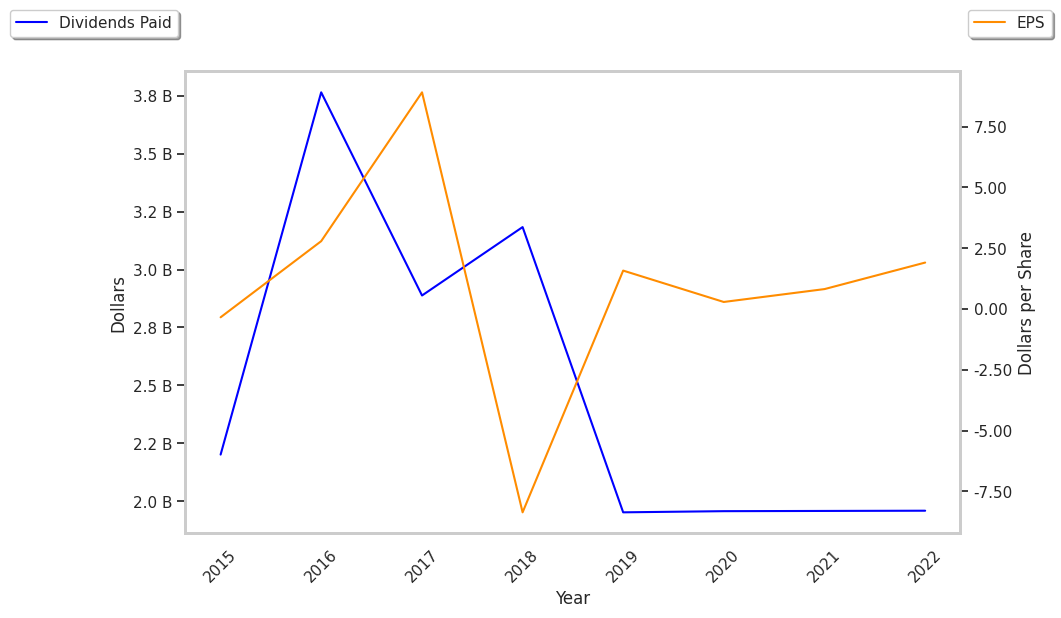One of Wall Street's biggest winners of the day is Kraft Heinz, a packaged foods company whose shares have climbed 3.5% to a price of $30.33 -- 16.89% below its average analyst target price of $36.49.
The average analyst rating for the stock is buy. KHC may have outstripped the S&P 500 index by 5.0% so far today, but it has lagged behind the index by 45.3% over the last year, returning -21.4%.
The Kraft Heinz Company, together with its subsidiaries, manufactures and markets food and beverage products in North America and internationally. The company is in the consumer defensive sector. It markets so-called staple goods and services that consumers tend to purchase regardless of their discretionary income. Thus, sales revenue tends to remain relatively unchecked by economic downturns, which in turn can contribute to share price stability. The flipside is that defensive stocks may see comparatively little growth during periods of economic growth.
Kraft Heinz's trailing 12 month P/E ratio is 27.3, based on its trailing EPS of $1.11. The company has a forward P/E ratio of 9.9 according to its forward EPS of $3.07 -- which is an estimate of what its earnings will look like in the next quarter.
The P/E ratio is the company's share price divided by its earnings per share. In other words, it represents how much investors are willing to spend for each dollar of the company's earnings (revenues minus the cost of goods sold, taxes, and overhead). As of the third quarter of 2024, the consumer staples sector has an average P/E ratio of 23.09, and the average for the S&P 500 is 29.3.
To gauge the health of Kraft Heinz's underlying business, let's look at gross profit margins, which are the company's revenue minus the cost of goods only. Analyzing gross profit margins gives us a good picture of the company's pure profit potential and pricing power in its market, unclouded by other factors. As such, it can provide insights into the company's competitive advantages -- or lack thereof.
KHC's gross profit margins have averaged 28.2% over the last four years. While not particularly impressive, this level of margin at least indicates that the basic business model of the company is consistently profitable. These margins have slightly increased over the last four years, with an average growth rate of 0.3%. Kraft Heinz's financial viability can also be assessed through a review of its free cash flow trends. Free cash flow refers to the company's operating cash flows minus its capital expenditures, which are expenses related to the maintenance of fixed assets such as land, infrastructure, and equipment. Over the last four years, the trends have been as follows:
| Date Reported | Cash Flow from Operations ($ k) | Capital expenditures ($ k) | Free Cash Flow ($ k) | YoY Growth (%) |
|---|---|---|---|---|
| 2023 | 3,976,000 | 1,013,000 | 2,963,000 | 90.79 |
| 2022 | 2,469,000 | 916,000 | 1,553,000 | -65.17 |
| 2021 | 5,364,000 | 905,000 | 4,459,000 | 2.91 |
| 2020 | 4,929,000 | 596,000 | 4,333,000 | 55.64 |
| 2019 | 3,552,000 | 768,000 | 2,784,000 | 59.27 |
| 2018 | 2,574,000 | 826,000 | 1,748,000 |
- Average free cash flow: $2.97 Billion
- Average free cash flown growth rate: 5.5 %
- Coefficient of variability (lower numbers indicating more stability): 0.0 %
With its positive cash flow, the company can not only re-invest in its business, it can offer regular returns to its equity investors in the form of dividends. Over the last 12 months, investors in KHC have received an annualized dividend yield of 5.5% on their capital.
Another valuation metric for analyzing a stock is its Price to Book (P/B) Ratio, which consists in its share price divided by its book value per share. The book value refers to the present liquidation value of the company, as if it sold all of its assets and paid off all debts.
Kraft Heinz's P/B ratio of 0.76 indicates that the market value of the company is less than the value of its assets -- a potential indicator of an undervalued stock. The average P/B ratio of the Consumer Staples sector was 3.3 as of the third quarter of 2024.
Kraft Heinz is by most measures undervalued because it has an average P/E ratio, an exceptionally low P/B ratio., and generally positive cash flows with an upwards trend. The stock has mixed growth prospects because it has a an inflated PEG ratio and strong operating margins with a positive growth rate. We hope you enjoyed this overview of KHC's fundamentals.



